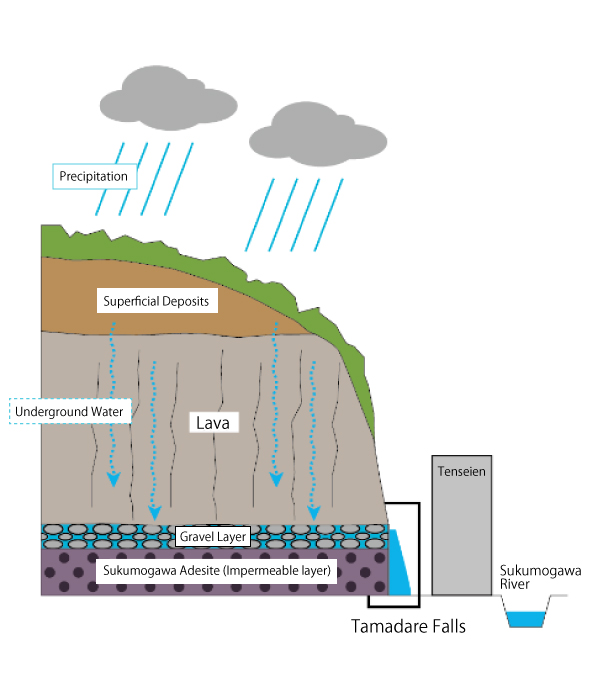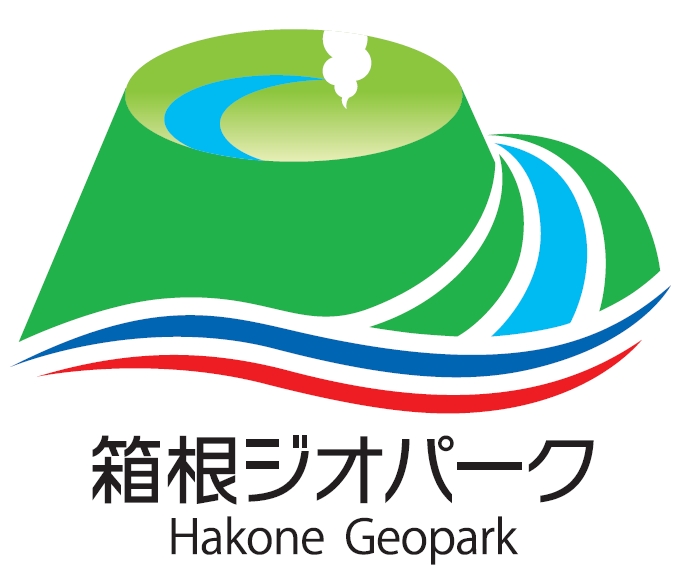Yusuino Taki (Spring Water Falls) “Tamadare no Taki (Tamadare Falls)”
Water that has been brought up to the surface, seeks to go underground. Tamadare Falls is a location where groundwater travels along the layers of lava and gravel and when the solidified Sukumogawa andesite (impermeable layer) is reached, it is unable to penetrate and overflows to the surface. The lava belongs to the early central crater hill and the Sukumogawa andesite are old strata formed before the Hakone volcano started eruption activities. Together with the “Hayakawa Tuff Breccia” in the Yumoto area and the “Ashigara Formation” that can be seen in Minamiashigara City, the Sukumogawa andesite is considered to be base rocks that form the foundation of the Hakone Geopark.

Takinomae yuen (Takinomae Garden)
The area around Tamadare Falls was built around 1890 but the waterfall was buried by a landslide caused by the Great Kanto Earthquake of 1923. The present waterfall was excavated during the Showa era.
Tamadare Falls and The Takinomae Garden (Hakone Town History Museum Collection)
“Natural Disaster Monument” conveying damage to Future Generations
Within Tenseien where Tamadare Falls is located, is a stone monument that describes the Enmei Jizou Bodhisattva and its origin. The stone monument describes how two people lost their lives when they were washed away in the muddy river while engaged in protecting the Sukumo Rivers during Typhoon Ione in 1948. The Geospatial Information Authority of Japan is making efforts to convey such disasters that occurred in the past to future generations, by posting them on the Web Map, “GSI Maps”, as “Natural Disaster Monuments”.
Stone rubbing of monument describing origin (provided by Tenseien)
Natural Disaster Monument, GSI Map Icon
(provided by Geospatial Information Authority of Japan)



